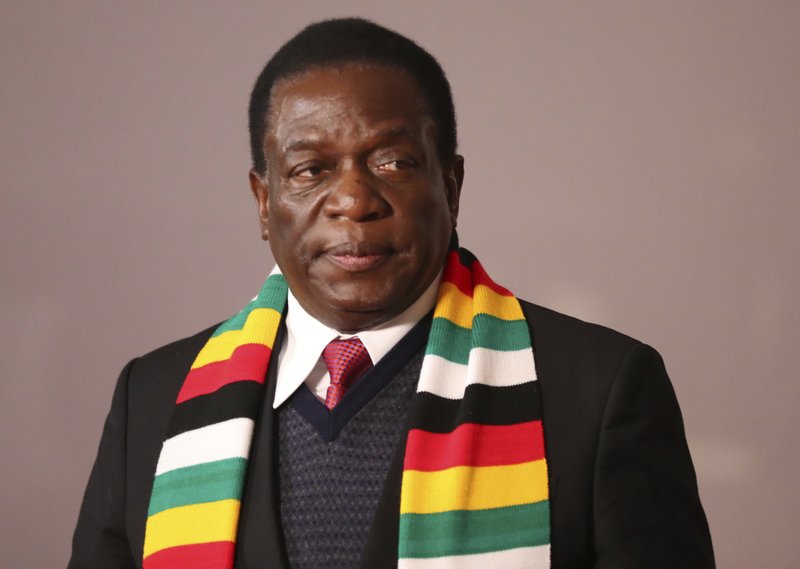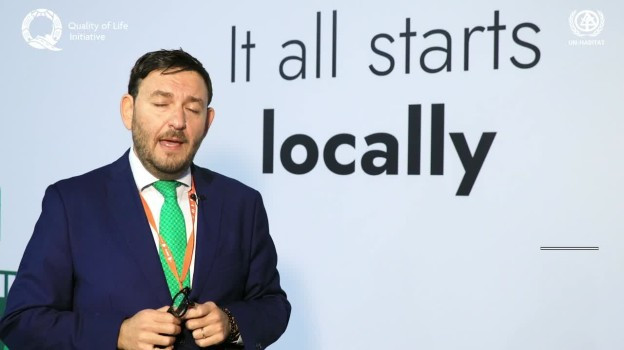
Dumisani Nkomo Author SINCE 1980, the Zimbabwean government has formulated a plethora of economic policies in a bid to ameliorate economic performance and improve the standard of living of its citizens.
It has become clear that Zimbabweans are masters of policy formulation and villains of effective policy implementation. This is apparent in that, since Independence, the Government of Zimbabwe has launched no less than eight glowing economic blueprints, but to this day, little has been seen in terms of real economic growth and development.
Currently, the government has launched Vision 2030, which aims to make the country a prosperous and empowered middle-income society by 2030. Vision 2030 is then broken down into two chronological economic policy blueprints, namely National Development Strategy (NDS) 1 (January 2021 to December 2025) with its successor NDS-2 being effected from January 2026 to December 2030.
The question that begs to be answered though is, are we going around in circles with economic blueprints that have nice long fancy names but in effect are similar and ineffectual? Looking at the efficacy and effectiveness of successive economic blueprints we must ask ourselves fundamental questions such as:
Are the policies in themselves intrinsically defective in their design?
Are the policy blueprints good, but lacking in implementation capacity or will to implement?
Do the policies lack a cutting edge futuristic edge?
Are these blueprints deficient of the how factor i.e. strategy?
- Chamisa under fire over US$120K donation
- Mavhunga puts DeMbare into Chibuku quarterfinals
- Pension funds bet on Cabora Bassa oilfields
- Councils defy govt fire tender directive
Keep Reading
Are they just public relations instruments of the government?
How strong is parliament as the oversight structure of the executive arm of government, in bringing the government to account for the failure or success of these policies?
What has been the role of organised business, civil society and academia in the formulation, review and implementation of these policies?
Has the opposition provided tangible alternatives to these policies?
I will address a few of these concerns in this instalment, but they will be more adequately addressed in subsequent articles.
An audit of the policies
Since 1980, a galaxy of economic policies has been formulated beginning with Bernard Chidzero’s Growth with Equity Policy. The following policies have been implemented since independence, but generally marginal on the quantum of economic growth and improvement of the standard of living of the populace.
It is interesting that almost all the blueprints have the same objectives, structure, diction and language, indicating that they were either crafted by the same people or there may have been a lot of cutting and pasting from one policy document to the other.
Hopefully, this is not the case, but a cursory glance at the Zimbabwe Programme for Economic and Social Transformation, which was the successor policy to the Economic Structural Adjustment Programme of the mid-1990s.
There are striking similarities to the Zimbabwe Agenda for Sustainable Socio-Economic growth (2013–2018). There is nothing wrong both ethically and morally with this, but what may be worrying is a sense that there appears to be at times a lack of innovative policy thinking and policy making.
The following policies have been formulated by the Government of Zimbabwe since independence:
Growth with Equity — post independence
The Economic Structural Adjustment Programme of the early 1990s, which came with trade liberalisation, cost recovery schemes, proposed commercialisation and privatisation of public enterprises. Commentators light heartedly commented that Esap, which was supposed to bring shock therapy to African economies caused shock with no therapy.
The Zimbabwe Programme for social and Economic Transformation (1996-1998).
These blueprints have a focus ostensibly on social and economic transformation, predicated on stabilising macroeconomic fundamentals. In real terms, economic growth slowed down to almost 2% between 1998 and 1999 from around 6%. This was also due to suicidal and genocidal spur of the moment; economic decisions, such as the not so well thought out gratuity to ex-combatants which was necessary, but not based on proper planning and budgeting. The policy brought neither economic nor social transformation.
The Millennium Economic Recovery Programme was then launched with much pomp and ceremony, but again marginal economic gains. It was succeeded by the National Economic Recovery Programme.
Policy makers must be congratulated, though for impressive sounding acronyms and flowery executive summaries, but in real terms, actual economic stability and growth was not achieved, culminating in the 2007-2008 economic crisis.
The Government of National Unity (GNU) of the post 2008 era, which was birthed by the Global Political Agreement, then conceived the Short-Term Economic Recovery Programme (Sterp).
This was a short-term policy framework which sought to restore macroeconomic stability. Sterp appears to be one of the few positives in terms of policy success, as it managed to address runaway inflation and build business confidence for the first time in over a decade.
It must be noted that the key determinant of the success of Sterp was the political environment and the new political architecture predicated on a unity government, represented by the ruling Zanu PF, MDC-T and the MDC, then led by Professor Arthur Mutambara.
During that period, there were short-term economic dividends and Zimbabwe as the country experienced a political Sabbath and economic jubilee of sorts.
The GNU ended with the 2013 elections and the new but old government was solely composed of one party, Zanu PF.
The economic policy that was then put in place was the Zimbabwe Agenda for Sustainable Socio-Economic Transformation (ZimAsset) which was a cluster based model premised on four models namely food security, social services, infrastructural development and social services with a strong emphasis on indigenisation and empowerment.
Besides having a spectacular name, ZimAsset like so many other economic blueprints, was a spectacular failure.
The military coup of 2017 resulted in the discontinuation of the policy, which was then replaced by the Transitional Stabilisation Plan (TSP); a short-term economic stabilisation programme, which amongst other things sought to bring about macroeconomic stability, international confidence with the theme of Ease of Doing Business being a dominant motif and theme.
The TSP was then succeeded by the NDS-1, which is part of the broader Vision 2030 Blueprint, which also encompasses NDS-2 (2025-2030).
It is important to note that in all these policies, there is no fundamental policy or paradigm shift. This is with the seeming diversion from the indigenisation pathway, which was articulated in ZimAsset.
Everything else appears to be a copy and paste of other policy blueprints. The policies are in themselves good policy blueprints but what appears to be lacking in is a desire to actually implement these policies.
For example, the notion of Results Based Management Systems appears virtually in all government blueprints but there is little progress in that direction.
Vision 2030
Vision 2030 seems to have been a rushed blueprint, though it contains a lot of macroeconomic stability positives. Already, indicators are that some of the positives are not being implemented at all. For example, the four pillars of ZimAsset were replaced by five new pillars namely:
Governance
Macro-economic stability and financial re-engagement
Inclusive growth
Infrastructure and utilities
Social development
None of these are fundamental departures from past policy pathways, but what is striking is the crafters’ propensity to swiftly rush to use terms, such as mainstreaming and crosscutting, which generally result in non-implementation.
Vision 2030 main streams youth development, gender, sports, arts and SMEs development. Some of these can actually be critical drivers of economic growth. The creative industries, for example, and in particular film, have contributed immensely to the GDP growth of countries such as South Africa, Nigeria, India and the United States and cannot perennially be viewed as being peripheral to economic growth trajectories.
We need to re-imagine our policy making and rethink the drivers of economic growth. The country needs to leverage on its competitive advantages and avoid policy repetition.
Vision 2030 purports to champion values, such as constitutionalism, democracy, decentralisation/evolution, human rights, rule of law, freedom of expression and association, responsiveness of public institutions and participatory decision-making.
The introduction of a draconian Private Voluntary Organisations law, the Esidakeni Farm saga and the failure to properly implement devolution of power militate against the attainment of these lofty Vision 2030 aspirations.
- Nkomo is a writer and development practitioner.











